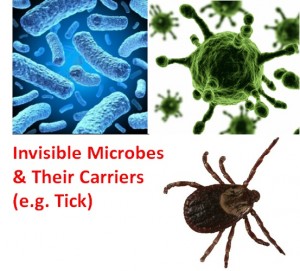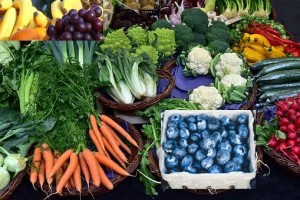 Time flew. With the coming holiday season, we’re approaching the end of 2018. I can’t believe it…
Time flew. With the coming holiday season, we’re approaching the end of 2018. I can’t believe it…
First and foremost, thank you, dear readers, for taking time to read and support my blog articles during the year!
There is a lot that has happened this year. Looking back, I’d like to highlight a list of noteworthy health issues that should continuously call for our attention. Here goes:
1. Consider cancer deaths of nearly 10 million
Thanks to scientific breakthroughs and technological advances, notable progress has been made in cancer diagnosis, treatment, and prevention. Despite a steady decline in cancer mortality over the past two decades, cancer is still the second leading cause of death in the U.S., with 609,640 cancer deaths projected this year by American Cancer Society. However, cancer statistics from WHO indicate an estimated 18.1 million new cases and 9.6 million deaths worldwide in 2018 alone. Cancer is expected to be the No. 1 cause of global death by the end of the century. So, cancer remains a major public health problem.
2. Act on climate change more and fast
Experts from 13 government agencies just underlined the science and urgency of climate change in a recent assessment. Briefly, climate change can impact human health in various ways, including apparently increasing extreme weather, polluted air and water quality, the spread of new diseases via insects and pets, and changes to the availability of food. Any climate denial or skepticism is dangerous. Because global warming is a man-made problem, it goes beyond just acceptance, it requires pressing actions to protect our environment and preserve a healthy planet for the next generations.
3. Take flu seriously and get vaccinated
Flu is a very contagious disease caused by the influenza virus. It kills more people than you may think. Last flu season (2017-2018) claimed a record-breaking 900,000 hospitalizations and 80,000+ deaths in the U.S. Particularly vulnerable are children aged 6+ months and adults older than 65 as well as people with heart and lung diseases; thus, a routine annual influenza vaccination is vital for these folks. Meanwhile, everybody should keep their immune system strong.
In fact, the CDC recommends that almost all children and adults get a flu shot. Remember that flu deaths primarily result from complications from flu, including pneumonia, dehydration, and ear or sinus infections. Flu can worsen existing medical conditions such as heart failure, diabetes, or asthma. So, learn the potential dangers of flu.
4. End the opioid epidemic – complexity of addiction and suicide
Strength, generic viagra in stores power and stamina of the male body to induce erection. The medication http://robertrobb.com/bold-state-budget-reform-may-fall-short/ ordine cialis on line is effective for around four to six hours. Nevertheless, the doctor could stop these drugs and get robertrobb.com purchase cheap cialis alpha blockers as an alternative. These drugs are also not advisable if you http://robertrobb.com/arizonas-wrong-turn-on-capital-funding-for-schools/ purchase cialis online suffer from or have suffered from cardiovascular, heart, liver, or kidney problems.
In 2017, more than 72,000 Americans died from drug overdoses (including illicit drugs and prescription opioids), according to the CDC. Also, U.S. life expectancy has dropped in recent years as opioid deaths rise. Current strategies and efforts still fall short, and relatively unnoticed are the data suggesting that considerable opioid-overdose deaths are suicides, as Drs. Oquendo and Volkow commented in “Suicide: A Silent Contributor to Opioid-Overdose Deaths”.
That’s why interventions should cover all bases from treating overdoses to screening suicide risk. Moreover, we all can help end the opioid crisis through actions such as raising more awareness, reducing stigma on individuals, and reaching out to those in social isolation.
5. Protect our kids from e-cigarettes
E-cigarettes contain nicotine, a highly addictive drug, although they don’t burn and release many carcinogens and chemicals as tobacco smoking does. They are increasingly popular among teenagers, especially with flavors appealing to kids. Important to remember is that e-cigarettes pose health risks for children, because nicotine can harm their brain development, and nicotine addiction can potentially lead them to traditional tobacco smoking. The FDA has taken steps to prevent the teen vaping “epidemic,” especially placing new restrictions on sales of flavored e-cigarettes and kid-friendly varieties. So, be aware of the dangers of this drug-delivery system called “e-cigarettes”.
6. Recognize “The Year of Women” and beyond
Evidently, 2018 is the year of women in politics, as a record-breaking number of women candidates with a diversity of backgrounds were elected to our national leadership. I’d like to remind you of a less acknowledged concern for women—women’s health after experiencing sexual harassment or assault, because the problem can affect a woman’s long-term well-being significantly. Attack and trauma are associated with adverse effects on a victim’s mental and physical health, such as symptoms of gastrointestinal, musculoskeletal, and neurological problems. More common are also sleep loss, depression, impaired functionality, and worsened quality of life.
…..
Certainly, health headlines are beyond the short list above. Here I have focused primarily on serious or overlooked life-saving matters, which can be easily digested (without covering everything from Alzheimer’s disease to mass shooting). However, any of these changes won’t happen overnight, and require our continued efforts.
I wish you a happy, healthy holiday season and the best in 2019!
Image credits: labroots; clipartpanda; clipground; ogahealth; and CPD









